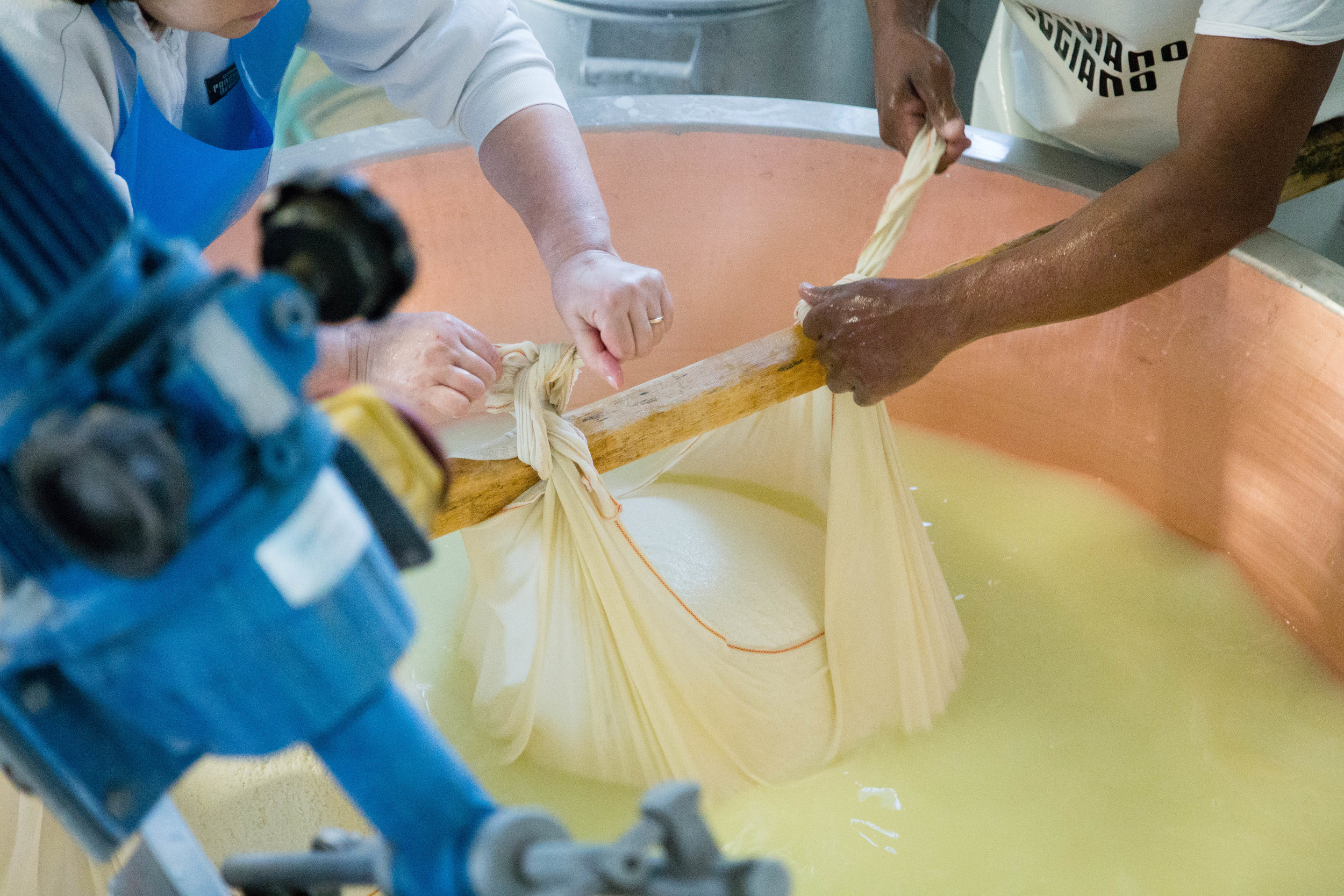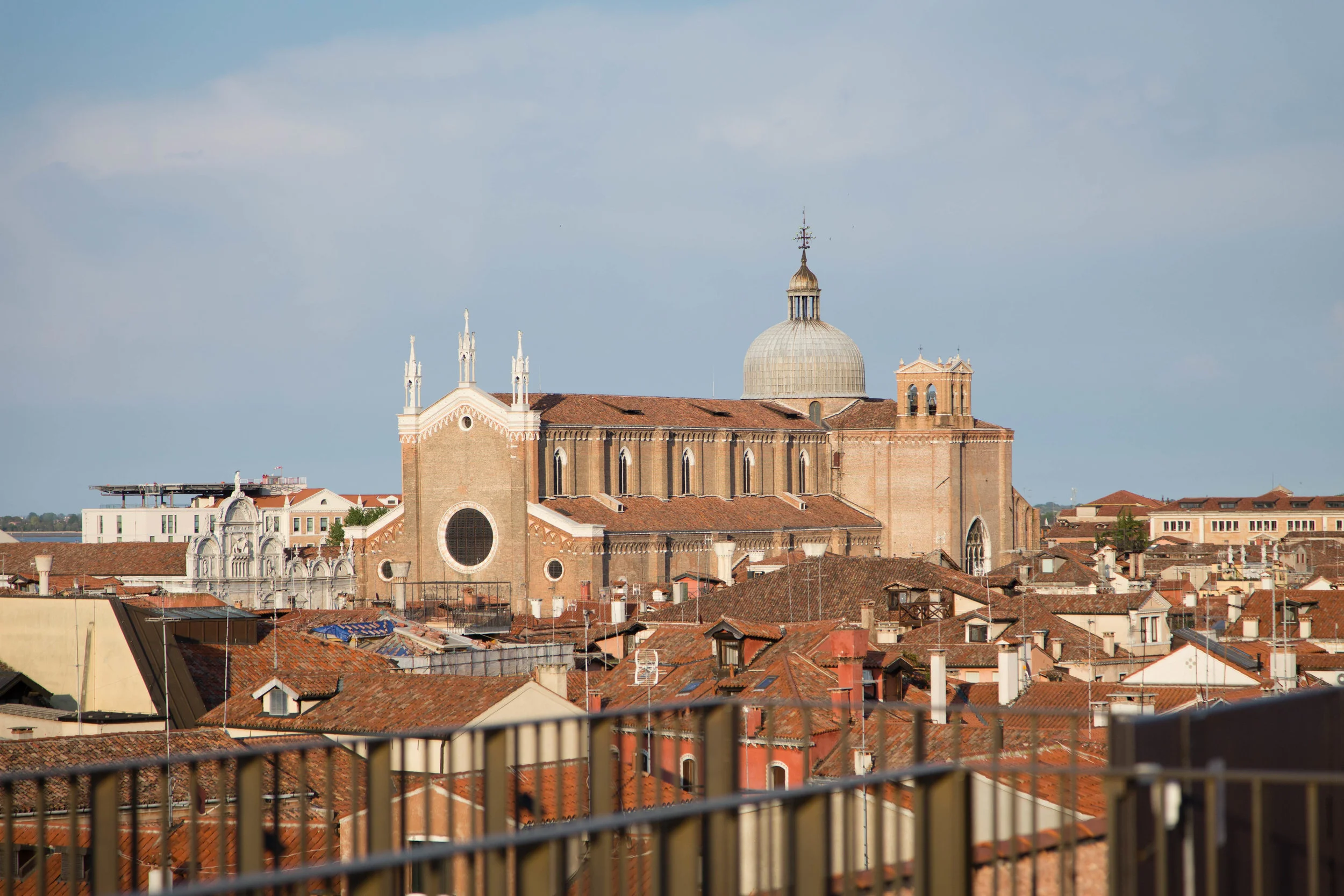Bangkok
One word can easily describe Bangkok -- INSANE. After arriving from Cambodia, we experienced a major culture shock the second we stepped into Bangkok. The air is so polluted, you can see it, feel the weight of it, and taste the pollution every time you open your mouth. Many people walk or drive their mopeds with masks over their faces. We arrived at our hotel, the Baan Chantra, and we're amazed to find a small oasis in the heart of a big, crazy, loud city. We stepped foot into the hotel lobby, and were asked to remove our shoes, and were quickly greeted by ice cold water as we sat at the desk to check in. The owner at the front desk was extremely warm and welcoming, and she personally escorted us to our room on the top floor. Outside our room was a beautiful wooden deck, surrounded by lush plants, and the sounds of trickling waterfalls. However, once you stepped foot outside, you were immediately bombarded with the loud noises of tuk tuk taxis and cars zooming everywhere, driving sometimes head on into oncoming traffic. The worst thing about Bangkok is the scams. Everywhere you try to go, you are quickly approached by nicely dressed men, asking you if you need help finding something. They seem really nice at first, but then continue to inform you that the place you want to go to is "closed for aBuddhist holiday" and they recommend that you go with them to their friend's store, which is having a huge sale. Within the first 10 minutes, we were probably approached by 5 different people, asking us where we are going, if we would like a ride, informing us that the boat we want to catch is not running today, or the temple we want to visit is closed for a holiday. It became very tiring, very quickly. We saw a few temples in Bangkok, including the Grand Palace and the reclining Buddha, and cruised through part of the city via a river boat with locals. We visited Khao San Road, which is essentially a street designed to entertain foreigners -- it's full of cheap souvenirs, cheesy bars, loud music, and prostitutes. We quickly realized that was enough of Bangkok for us. The constant attempts at scams wore quickly on us and we were very excited to get out of there. On our second and last day in Bangkok, we got up early to go visit a floating market where vendors sell various foods and cheap souvenirs via boats in the canals. The hotel owner packed us a 'bag' breakfast to go, as we had to be out by 6:30am, which was half an hour before they begin to serve breakfast. The floating market was okay, but we really enjoyed the trip out there because we met a really cool British couple who had been traveling through Southeast Asia with their 3 year old son. We really enjoyed swapping travel stories and talking to them about anything from the war to the economy and everything in between. They expressed gratitude that we finally "got rid of the Bush era" and they referred to the new president as "Our Obama," stating the opinions of Americans were finally coming out of the gutters. We met numerous Europeans who stated they and others they knew have refused to travel to the States while Bush was in office. After visiting the floating market, we returned to our hotel and the hotel owner offered us to use our room to shower, even though it was hours past the time we checked out. We were really thankful for the shower, but most thankful to be finally leaving the chaos in Bangkok.
We arrived in the Bangkok Airport to catch our flight on Bangkok Airways to Phuket. I should mention that Bangkok Airways is my new favorite airline. We booked our flight the night before departing and paid only $60. Because we booked so late, our tickets were handwritten and personally dropped off at our hotel the evening before. Bangkok Airways offers all guests access to a beautiful lounge in the departure terminal, full of cushy sofas and chairs, free food (pastries, pineapple cake, coconut rice rolls, bean cakes, coffee, tea, and juices) and free internet and wifi access. They also give you a full meal on each flight, even if its just an hour flight. Wow! We didn't even get a bag of pretzels when we flew from LA to NY on United. The flight was great, and we even got to enjoy the sunset from the sky as we began our descent into Phuket.
Kata
We caught a ride to Kata from the airport in Phuket. Kata is a beach town in the southern part of Thailand. We had heard how beautiful the southern part of Thailand is, but were shocked to see how developed it had become. We checked into our hotel, the Sugar Palm Resort, which sat atop a hill overlooking the city of Kata. The hotel was modern and very chic but on the hill behind it you could see a bunch of garbage. We walked down the hill from our hotel into the town of Kata and were greeted by loud American music, Italian restaurants, prostitutes sitting outside bars luring in men, and Indian businessmen who owned shops who were constantly trying to shake men's hands and entice them into their stores to have custom silk suits made. It seems that after the tsunami the entire southern coast of Thailand was destroyed, and American, European, and Asian corporations or businesses came in to capitalize on the opportunity. Kata definitely caters toward American and European vacationers. Its essentially a huge resort town, with no Thai culture left at all. It was really quite sad. The beach was beautiful, but full of tourists. We managed to find some "Thai" food amongst all the Italian restaurants and bars, but the quality was disappointing. It was also quite awkward seeing the young Europeans next to us eating dinner with a Thai prostitute, who was probably in her late teens or early 20's.
We decided to catch a bus the next morning back to the Phuket bus terminal to head down to Krabi where we could catch a boat ride to Railay, another beach town in the southern part of Thailand. Before we got to the bus terminal, the bus stopped in a small local market and the driver accepted some money by a man who approached the bus and announced it was the end of the line, instructing everyone to get off. Unfortunately, we were still a mile or two from the bus terminal. We had to carry our luggage through the town, trying to locate the bus terminal, without a map. After walking about half an hour, we located what appeared to be a bus terminal, but was actually a privately run business chartering buses that looked legitimate, but probably weren't. Luckily we quickly found the real bus terminal and bought our tickets to Krabi. During the 3.5 hour ride from Phuket to Krabi , we stopped frequently and vendors walked onto the bus, trying to sell food or drinks. We made it to Krabi safely and then hailed a taxi from the bus station to the boat terminal. Once again, we were approached by more scam artists this time trying to tell us that the last boat of the day already left. We ended up paying much more than we should have to catch our own private long tail to Railay.
Railay
After a 45 minute boat ride, we approached the town of Railay. It was low tide at night, so the boat docked as close as it could to the cement sidewalk strip that leads up to the land. It was extremely slippery and I almost fell down in the water with my luggage.
Railay sits on a very narrow strip of land, surrounded by water on both sides. Although its not an island, because its surrounded by water on both sides, it has an island feel to it. You can walk from one side to the other in about 5 minutes, and because they allow no cars, you can only reach it by boat. The town of Railay is small and quaint, primarily small motels and guesthomes on the east side, and larger resorts on the west side. The beach was beautiful and we had a great time swimming in the warm water. We went for a short hike up some rocks (with the help of some ropes) to a view point of a lagoon. We even saw some cute monkeys in the trees. There wasn't much else to do there, besides enjoy the sunset and the beautiful beach. After two nights, we caught the long tail back to Krabi to catch our flight up to Chiang Mai.
Chiang Mai
Although it's the 5th largest city in Thailand, Chiang Mai has somehow managed to retain some of its culture. Its not nearly as hectic as Bangkok and there are far fewer scam artists. We walked around town and saw some really cool temples in the middle of the city. Dave is really enjoying the food from the street vendors, even though he doesn't know what most of it is.
On our second to last day in Chiang Mai, the hotel owner started to talk to us about how "rish" we could become if we teamed up with him to sell his "precious gems" and his homemade medication that cures Parkinson's and Alzheimer's and also works as a "love medication." Urgh, more scams. Needless to say, we checked out the next morning, after hitting up a national park.
Pai
We caught a 4 hour bus ride to Pai and were surprised to find a quaint, laid back town in the very north of Thailand. Pai is filled with restaurants and cafes and not much more. We're staying at a really cute bungalow style room on stilts, overlooking the river. On our second day in Pai, we decided to take a long walk to a waterfall that was supposed to be 7 km each way, but because we got lost it ended up taking about 6 hours total round trip. At least we got to enjoy some of the countryside though. We managed to avoid the wild pack of dogs on foot, although I almost had a heart attack at one point when we were confronted by 5 barking and growling dogs in the middle of our path up the hill.
We found a great restaurant that serves awesome curries. The best part besides the food is that they keep a pet monkey in a cage in the back of the restaurant. I've been talking to him and holding his hand through the cage and I thought we had developed some sort of friendship. Then all of a sudden he grabbed the plastic ball at the end of my shoelace and managed to stretch my 4 inch elastic shoelace three feet long and put the tip into his mouth.
Today we rented a motorcycle and cruised all around the outskirts of Pai. We went to a natural hot springs and relaxed in the warm water. There were some people with bags of eggs in nets tied to the ends of bamboo sticks who were making hard boiled eggs in the hot springs. Tomorrow we'll catch a flight out of Pai on a single prop plane back to Chiang Mai. We have a long layover before catching our flight to Bangkok, through Tokyo and then back to LA.





































































































































































































































































































































































































